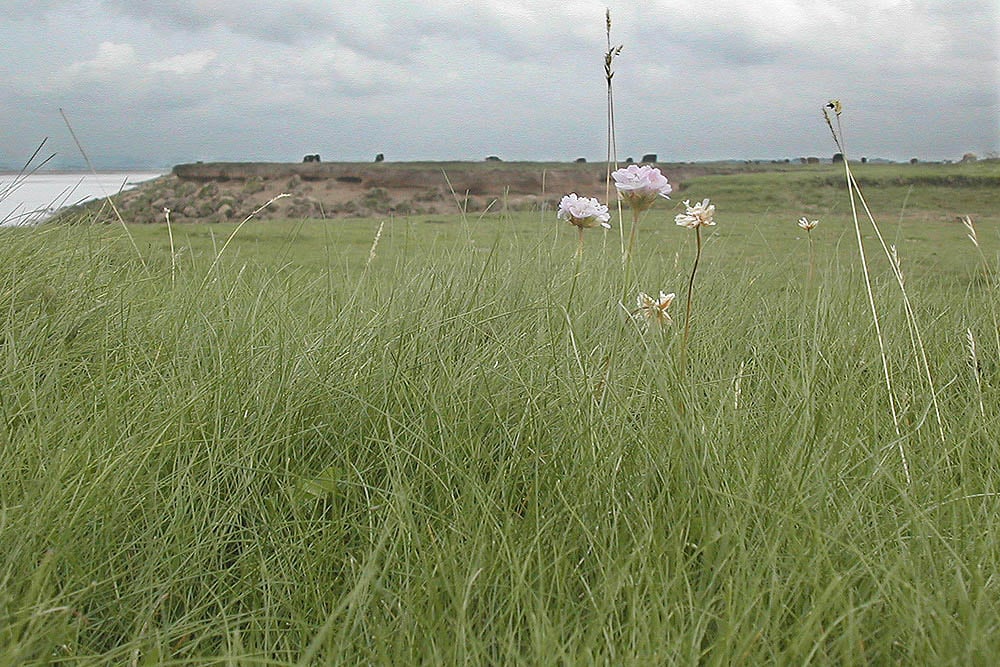Description
Red fescue is a fine-leaved perennial grass of medium height and vigour. Its fine, bristle-like, mid to dark green glossy leaves are probably its most characteristic feature. Its heads are branched typically growing to less than 70cm in height. Red fescue is extremely variable species which can grow in dense tufts or spread out by rhizomes to form patches or carpets of fine leaves. The coastal subspecies of wild red fescue (F.rubra ssp litoralis) we offer was originally collected from sea-washed turf in Cumbria.
Habitat information
Red fescue is a widespread grass species common in all kinds of grassy habitats, including meadows, pastures, saltmarshes, sea-cliffs, sand dunes, hill grasslands, mountain slopes and rock ledges.
The subspecies litoralis is an adapted salt tolerant form which can be found growing naturally on grazed saltmarshes, usually forming a tight turf with creeping bent and saltmarsh grass. This turf was at one time highly prized and lifted to be sold as sea-washed turf to create the best bowling greens and tennis courts. Seed too was once collected and sold as ‘cumberland fescue’ and subsequently became the basis of some modern slender-creeping red-fescue lawn varieties.
Growing information
Red fescue seed can be sown at any time of the year when soil conditions are suitable. It can be moderately quick to germinate from sowing, but being a relatively slow-growing grass, the small fine leaved seedlings will take some time to grow before they reach full size and cover.
Once established, red fescue plants are very long-lived and able to withstand considerable nutrient and drought stress. They are able to spread effectively by creeping vegetative rhizome growth, so are not dependant on seed to regenerate or colonise gaps. In finer grassland red fescue forms a valuable structural component at the base of the sward.
Red fescue is tolerant of frequent close mowing or grazing and responds by producing a fine dense sward so is widely sown to create lawns. Fescue turf is moderately tolerant of wear and trampling. On the other hand red fescue grassland which is left uncut for too long can build up a smothering blanket of dense growth with an accumulation of persistent dead leaf litter (thatch) at its base; which is not good for plant diversity. To avoid this, and maintain its balance with other species, again it is important to implement a good mowing regime.


